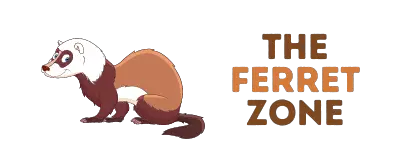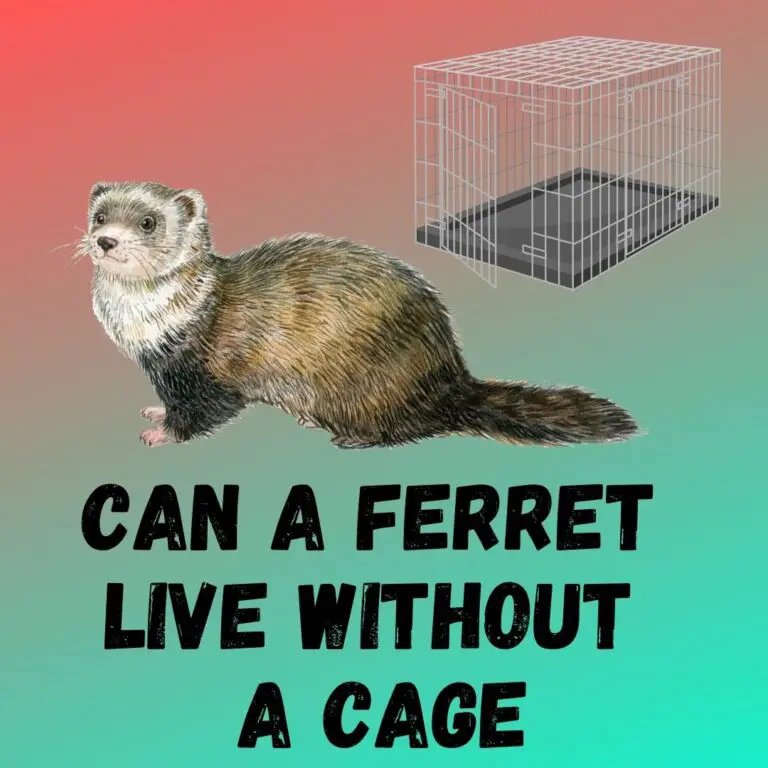
If you’re a fan of unique and fascinating animals, then you’re in for a treat! In this article, I’ll be sharing some incredible facts about the black-footed ferret. These elusive creatures are known for their striking appearance and intriguing behavior, making them a favorite among wildlife enthusiasts.
Habitat of the Black Footed Ferret
The black-footed ferret is a fascinating creature that is native to North America. In order to understand this amazing animal better, it’s important to explore its habitat.
The black-footed ferret primarily inhabits the vast grasslands and prairies of the Great Plains region, including parts of the United States and Canada. These grasslands provide the ferret with an ideal environment for hunting and finding shelter.
Due to its specific habitat requirements, the black-footed ferret is dependent on the presence of prairie dogs. Prairie dogs are a major food source for the ferrets, and their burrows also serve as the ferret’s homes. This interdependence makes it crucial for the black-footed ferret to have access to healthy prairie dog populations.
Unfortunately, over the years, the black-footed ferret population has significantly declined, mainly due to habitat loss and the decline in prairie dog populations. Human development, including agriculture and urbanization, has greatly reduced the available grassland habitat for the ferrets. Additionally, diseases such as sylvatic plague have also impacted prairie dog populations, making it even more challenging for the black-footed ferrets to find suitable habitat.
Conservation efforts are underway to protect and restore the habitat of the black-footed ferret. These efforts aim to create safe and healthy grassland ecosystems that can support both the ferrets and prairie dogs. By preserving and restoring their habitat, we can ensure the survival of this unique and endangered species.
The black-footed ferret thrives in the grasslands and prairies of the Great Plains region. Its habitat is dependent on the presence of prairie dog populations, which provide both food and shelter. Protecting and restoring their habitat is crucial for the survival of this remarkable species.
Physical Characteristics of the Black Footed Ferret
The black-footed ferret is a small mammal that is known for its unique appearance and physical characteristics. Here are some key facts about the physical features of this fascinating creature:
- Size and Weight: Adult black-footed ferrets are about 18 to 24 inches long, including their tail. They typically weigh between 1 and 2.5 pounds. This makes them one of the smallest members of the Mustelidae family, which includes otters, weasels, and minks.
- Coloration: The black-footed ferret has a distinct coloration that sets it apart from other ferret species. Its fur is mainly light brown or tan in color, with a black mask-like pattern around its eyes and black feet. This coloration helps them blend into their grassland habitat.
- Body Shape: The body of a black-footed ferret is long and slender, with a sleek and streamlined shape. This allows them to move swiftly through their grassland environment, both above and below ground.
- Claws and Teeth: The black-footed ferret has sharp claws and teeth, which are essential for catching and eating their primary prey, prairie dogs. Their claws are perfectly adapted for digging burrows and capturing prey underground.
- Eyes and Ears: Black-footed ferrets have well-developed senses, including excellent eyesight and hearing. These characteristics help them navigate their surroundings and locate prey, especially in low-light conditions.
- Reproductive Features: Female black-footed ferrets typically have litters of 3 to 5 kits, although larger litters have been recorded. They have a high reproductive potential, which is crucial for the recovery and survival of the species.
Understanding the physical characteristics of the black-footed ferret can provide valuable insights into their behavior, adaptations, and ecological role. These unique features make them an intriguing species to study and protect.
Diet and Hunting Behavior of the Black Footed Ferret
As an expert on black-footed ferrets, I have gathered valuable information about their diet and hunting behavior. Understanding these aspects is vital for anyone interested in these fascinating creatures. Let’s delve into the specifics:
Diet:
When it comes to their diet, black-footed ferrets are strict carnivores. They primarily feed on prairie dogs, making them highly dependent on these small rodents for survival. In fact, prairie dogs constitute up to 90% of their diet. This relationship is mutually beneficial, as the ferrets rely on the abundance of prairie dogs for their sustenance, while their presence helps control prairie dog populations.
Hunting Behavior:
Black-footed ferrets employ various hunting strategies to catch their prey. They are adapted for stealth and speed, allowing them to be highly efficient hunters. Here are some fascinating facts about their hunting behavior:
- Nocturnal Hunters – Black-footed ferrets are primarily active during the night, using their excellent night vision to their advantage.
- Ambush Predators – They are known for their exceptional ability to ambush their prey. They rely on their keen senses to detect even the slightest movements of prairie dogs above ground.
- Burrow Raiders – Black-footed ferrets are equipped with sharp teeth and strong claws, enabling them to dig into prairie dog burrows where their prey resides.
- Fast and Agile – With their slender body and long legs, they are incredibly fast and agile, enabling them to chase down their prey and capture them with precision.
- Specialized Dentition – Their sharp teeth are perfectly adapted for slicing through the tough hide and chewing the meat of their prey.
It’s important to note that black-footed ferrets are an endangered species. Conserving their habitat and ensuring the availability of their preferred prey, prairie dogs, is crucial for their survival. Scientists and conservationists are working diligently to protect and restore populations of both black-footed ferrets and prairie dogs.
Life Cycle and Reproduction of the Black Footed Ferret
The life cycle and reproduction of the black-footed ferret are fascinating aspects of their biology. Let’s take a closer look at how these endangered creatures bring new life into the world.
Breeding Season and Mating
Black-footed ferrets have a specific breeding season that typically occurs between February and March. During this time, both males and females become sexually active and seek out potential mates.
To attract a partner, males release a strong musky odor while females emit a high-pitched mating call. This allows them to communicate their readiness and availability for reproduction.
Gestation and Birth
After mating, the female black-footed ferret undergoes a gestation period of about 42-45 days. Once the gestation period is complete, the female gives birth to a litter of baby ferrets called kits.
A typical litter consists of 3 to 5 kits, but larger litters have also been observed. The kits are born blind and helpless, relying completely on their mother for nourishment and care.
Development and Weaning
During the first few weeks, the kits rely on their mother’s milk for nutrition. As they grow, their eyes gradually open, and they begin to venture out of the nest. At around 6 weeks old, the kits start to consume solid food, gradually transitioning from a milk-based diet to a meat-based one.
The mother gradually weans her kits over a period of about 2 to 3 months. This allows the kits to develop the necessary skills and independence to survive on their own in the wild.
Reaching Sexual Maturity
Black-footed ferrets reach sexual maturity at around 1 year of age. Once they are matured, they are ready to contribute to the next generation by participating in the breeding season and reproductive cycle.
Ensuring the survival and reproduction of the black-footed ferret is crucial for their conservation efforts. As an endangered species, it is essential to protect their habitats and provide the necessary resources for their successful breeding and overall population growth.
By understanding the life cycle and reproduction of these remarkable creatures, we can better appreciate the challenges they face and work towards their preservation.
Conservation Efforts for the Black Footed Ferret
Conservation efforts play a crucial role in ensuring the survival of the black-footed ferret (Mustela nigripes). As I mentioned earlier, these incredible creatures are one of the most endangered mammals in North America. Their population declined drastically due to factors like habitat loss, disease, and the decline of their primary prey species, the prairie dog.
To reverse this decline, dedicated conservation organizations, government agencies, and wildlife biologists have been working tirelessly to protect and restore the black-footed ferret population. These efforts have proven to be successful, resulting in the stabilization and modest growth of their numbers.
Here are some key aspects of the conservation efforts for the black-footed ferret:
- Reintroduction Programs: One of the most significant efforts has been the reintroduction of the black-footed ferret into suitable habitats where they were once extinct. This involves carefully selecting areas with suitable prey populations and implementing measures to ensure the ferrets’ survival and reproduction.
- Prairie Dog Conservation: Since black-footed ferrets heavily rely on prairie dogs for food and habitat, conservation efforts also focus on the preservation and restoration of prairie dog colonies. This includes habitat management, protection from poisoning and habitat fragmentation, and the establishment of prairie dog reserves.
- Captive Breeding and Release: Captive breeding programs have been instrumental in increasing the black-footed ferret population. Dedicated breeding facilities carefully manage and breed ferrets in captivity before releasing them into the wild, ensuring that the population continues to grow.
- Disease Management: The black-footed ferret is susceptible to several diseases, including sylvatic plague. To prevent disease outbreaks, conservationists implement vaccination and monitoring programs, reducing the impact of diseases on the population.
These collective efforts have led to significant successes in the conservation of the black-footed ferret. The recovery of this species demonstrates the effectiveness of strategic planning, collaboration, and continuous monitoring in safeguarding endangered wildlife.
As I continue to discuss the black-footed ferret, the next section will focus on the challenges that still remain in their conservation, and how ongoing research and education are key to their long-term survival.
Conclusion
The black-footed ferret is one of the most endangered mammals in North America, and its population has been declining due to various factors such as habitat loss, disease, and the decline of its primary prey species, the prairie dog. However, thanks to the dedicated efforts of conservation organizations, government agencies, and wildlife biologists, there is hope for the black-footed ferret’s survival.
Through reintroduction programs, prairie dog conservation, captive breeding and release, and disease management, the black-footed ferret population has been stabilized and has even shown modest growth. These collective efforts have made a significant impact on the conservation of this species.
Nevertheless, challenges still exist, and ongoing research and education are crucial for the long-term survival of the black-footed ferret. By continuing to monitor and protect their habitats, addressing disease threats, and promoting public awareness, we can ensure a brighter future for this unique and charismatic species.
The black-footed ferret serves as a reminder of the importance of conservation and the need to protect our vulnerable wildlife. By working together, we can make a difference and ensure that future generations can witness the beauty and wonder of the black-footed ferret in the wild.






